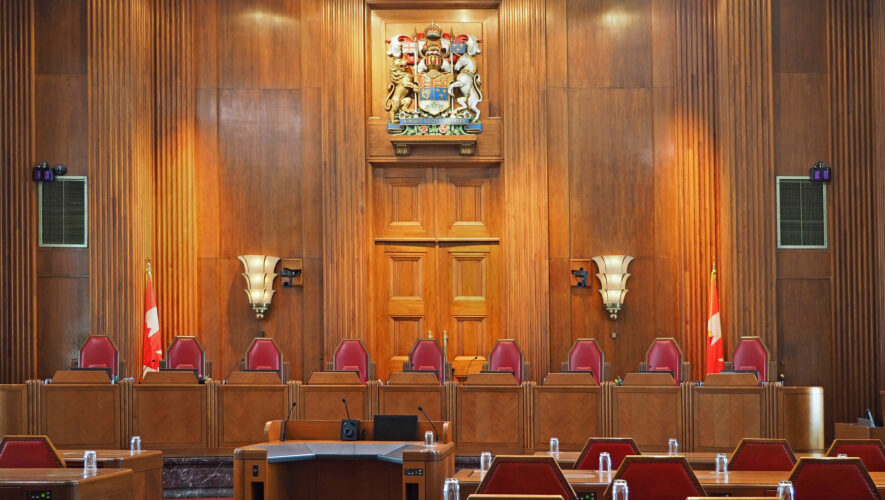February 2, 2021| By Julius Melnitzer
The Supreme Court of Canada’s growing tendency to dismiss appeals from the bench has been a subject of legitimate concern lately.
As the Globe and Mail pointed out recently, the trend is accelerating: of late, the court has been releasing fewer in-depth reasons and a growing proportion of decisions from the bench. Several members of the criminal defence bar complained that the SCC is “missing opportunities to develop the law” and “at times creating uncertainty about the meaning of precedents.” One counsel opined that the bench rulings are “made-for-Twitter decisions”.
To be sure, bench rulings can be unsatisfying to the lawyers involved, not to mention their clients.
“I’ve been in that situation myself, and I think the reaction is partly personal and partly professional, ” says Eugene Meehan, a lawyer at Supreme Advocacy LLP in Ottawa who is a former executive legal officer to the court and specializes in SCC matters. “Some lawyers get hot and bothered about going to the SCC, doing all the work associated with it, and then eliciting a small rattle rather than the earthquake they expected from the court.”

But there are two sides to the story.
“If the Court of Appeal or one of the dissidents on the court has done a bang-up job of dealing with the issues, is there any point in the high court doing it again?'” Meehan asks.
What apparently prompted the Globe’s article was the fact that the first five appeals the court heard in January (of six heard that month) were dismissed from the bench. Four appeals were as-of-right (did not require leave to be heard) criminal cases; the fifth was a medical malpractice case where the parties sought and obtained leave.
“The court has a history of dealing with as-of-right appeals from the bench,” Meehan says. “This recent batch makes it clear that that’s not going to change any time soon.”
But should it?
One consideration is that as-of-right appeals can proceed only if at least one judge has dissented in the Court of Appeal. That means that there’s some controversy about the ruling.
All the more so, then, when the ultimate decision from the SCC is itself not unanimous. That occurred in three of the four criminal appeals that the SCC decided from the bench in January: two of the decisions were 5-2 and one was 6-1. In two of the four cases, then, three of eight judges (5-2 in the SCC, 2-1 in the Court of Appeal) dissented from the majority.
“The case can be made that when the SCC is itself divided, it’s not satisfactory for the court to offer no meaningful analysis,” says Scott Hutchison, a former Crown who now practices civil and criminal litigation at Toronto’s Henein Hutchison LLP. “That leaves judges and counsel struggling to reverse engineer the ratio of the case from a paragraph that cross references the appeal judgment that is being endorsed, usually in carefully parsed terms.”
As well, in the one criminal case where the court was unanimous, the bench consisted of all nine judges instead of the usual seven. Generally, the court sits a full bench only for the most consequential matters.
As for the civil malpractice case, it’s difficult to rationalize the fact that the SCC gave leave – either on the basis that the matter was of national importance or raised an important issue of fact, or fact and law – and then allowed the appeal, reversing the Court of Appeal, but citing only the reasons of the dissenting judge by way of explanation.
What makes the argument more compelling – apart from the split decision in the Court of Appeal – is that both the Healthcare Insurance Reciprocal of Canada, a non-profit group of over 600 healthcare organizations in Canada, and the Ontario Trial Lawyers Association, saw fit to intervene.
That’s significant because in the one unanimous criminal decision, Justice Moldaver attributed the court’s reluctance to deal with the issues partly to the “absence of interveners who could shed light on them”.
It’s not at all apparent, however, that Moldaver’s comments correspond with the court’s practice.
“Justice Moldaver’s oral reasons may send a mixed message by potentially encouraging more interventions,” Meehan says. “But even cases with many interveners have been dismissed from the bench in the past few years.”
On the other hand, it’s not as if the SCC never breaks new ground in as-of-right cases. Examples in 2020 include rulings relating to the right to be tried in a reasonable time, and laying down the parameters of the offence of dangerous driving.
“What it comes down to is that not every case before the SCC is worth a 60-page judgment and a 30-page dissent,” Meehan observes.
As with most issues the court has to address, then, it’s the fine lines that matter.
RELATED ARTICLES
Is SCC looking like SCOTIS: The language in Fraser v. Canada
Supreme Court decision aggravates termination clause problems for employers
Supreme Court ruling in RCMP pension case may force plan design changes
Julius Melnitzer is a Toronto-based legal affairs writer, ghostwriter, writing coach and media trainer. Readers can reach him at julius@legalwriter.net or https://legalwriter.net/contact.
